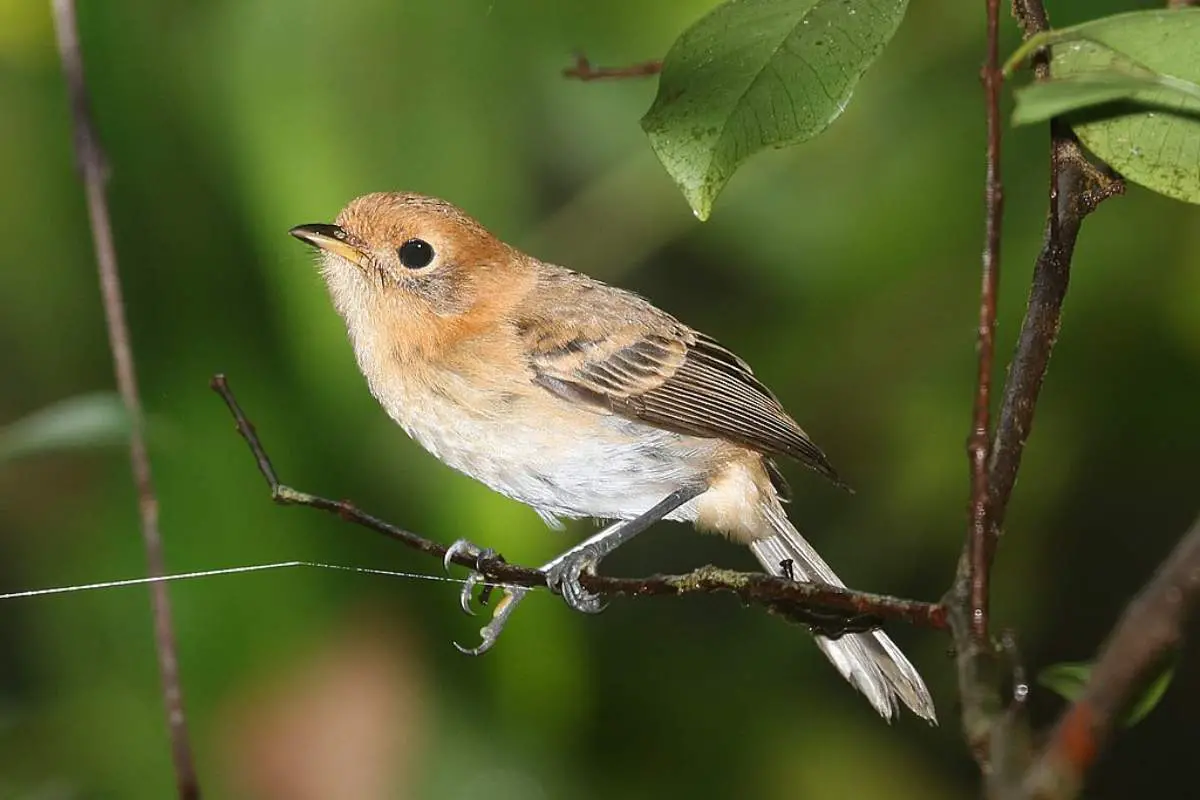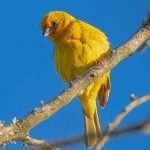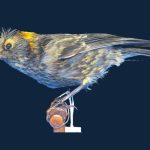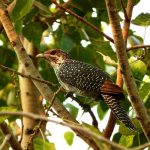Common Name: Oahu Elepaio
Scientific Name: Chasiempis ibidis| Size | Diet | Range in Hawaii | Status in Hawaii |
|---|---|---|---|
| 6 in. | insects and spiders | O'ahu | Endangered |
The Oahu Elepaio (Chasiempis ibidis) is a small songbird found exclusively on the island of O’ahu in Hawaii. It is a member of the Monarchidae family, which includes other monarch flycatchers found throughout the Pacific islands. It is known for its vocalizations, which include a variety of high-pitched calls and songs.
Oahu elepaio
Appearance
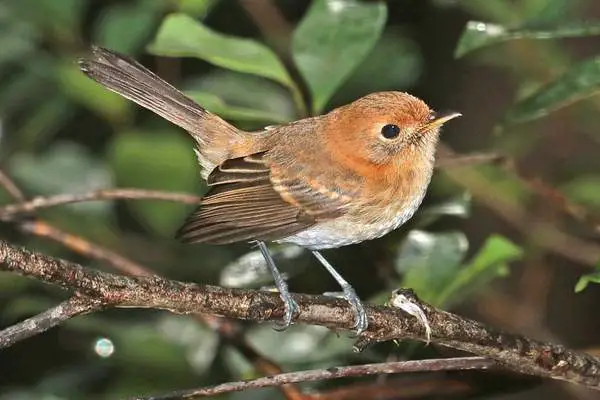
The O’ahu ‘Elepaio is a small songbird that has a distinctive plumage. Adult males and females have similar plumage. They have a brown head, back and upperparts, with a white throat, breast, and belly.
The tail is black with white edges. They have a short bill and a short wings. They have dark brown eyes and dark legs.
The juvenile birds are similar in appearance to adult birds but with more streaked underparts and a duller tail. The adult bird is around 6 inches long and weighs around 12 grams.
Diet
The O’ahu ‘Elepaio is an omnivorous bird, and its diet varies depending on the season and availability of food. They mainly feed on insects and spiders, which they catch by foraging through the underbrush and foliage. They also eat small fruits and berries, nectar, and occasionally small lizards and snails.
Behavior
The O’ahu ‘Elepaio is a non-migratory bird that is active during the day and can often be seen foraging through the underbrush and foliage for food. They are known for their vocalizations, which include a variety of high-pitched calls and songs.
These calls are used for communication between individuals and for territorial defense. The O’ahu ‘Elepaio is a territorial species, and pairs will defend their territory from other ‘Elepaio and other bird species. They are also known to be aggressive towards other birds when they encroach on their territory, they will chase and mob them.
Nesting
The O’ahu ‘Elepaio is a non-migratory bird that breeds on the island of O’ahu in Hawaii. They typically form pairs during the breeding season, which typically takes place from April to August. The nest of an ‘Elepaio is a cup-shaped structure made of twigs, moss, and other plant material, and it is lined with fine fibers and feathers.
Their nest is usually built in the fork of a tree or shrub, usually between 10-20 feet off the ground. The nest is relatively small, measuring about 4 inches in diameter and 3 inches deep. Both parents help to build the nest and care for the eggs and nestlings.
The female typically lays a clutch of 2 to 4 eggs, which are white with brown or red spots. Both parents take turns incubating the eggs, which usually hatch after about 12 to 14 days.
Once the eggs hatch, both parents take turns feeding the nestlings until they fledge, which typically takes place after about 16 to 18 days. The parents continue to feed and care for the fledglings for several weeks after they leave the nest.
Habitat
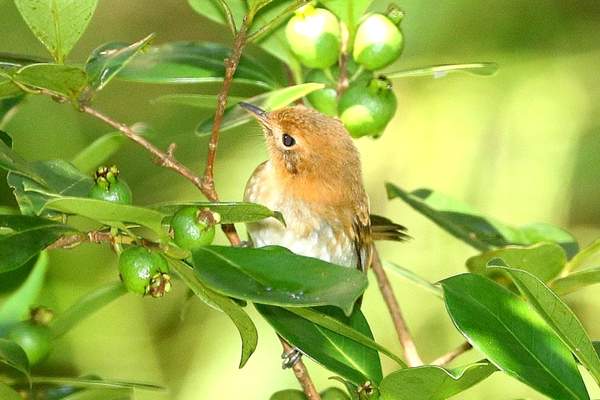
O’ahu ‘Elepaios are typically found in mesic and wet forests, where they forage for food and breed. They are also found in human-modified habitats such as parks, gardens, and residential areas, but they are less common in dry and lowland habitats. They are found at elevations ranging from sea level to around 3,500 feet.
Range
The bird’s range is limited to the island of O’ahu and is not found in any other islands of the Hawaiian archipelago.
Conservation Status
According to the IUCN Red List, the O’ahu ‘Elepaio is indeed considered to be Endangered.
Interesting Facts
1. They are attracted to the lights at night.
The ‘Elepaio is known to be attracted to the lights at night around human settlements, they will fly around the lighted areas and feed on the insects attracted to the light.
2. An indicator species
The O’ahu ‘Elepaio is considered to be an indicator species for the health of the native forest ecosystem on O’ahu, and its population trends are used as a measure of the overall health of the island’s native forests.
3. They are known as a “aumakua”
The O’ahu ‘Elepaio has a great cultural significance for Hawaiian people, it is known as a “aumakua” or family god and it is considered a protector of the family and their land.
4. The only member of the Monarchidae family found on the island of O’ahu
The ‘Elepaio is the only member of the Monarchidae family found exclusively on the island of O’ahu, and it is one of the three subspecies of the monarch flycatcher found in the Hawaiian islands.
Frequently Asked Questions
What is the significance of the Oahu Elepaio?
The O’ahu ‘Elepaio is an important species for the native forest ecosystem on O’ahu, it is considered a keystone species and plays a critical role in controlling the populations of insects and other invertebrates, which are important food sources for other native birds and animals.
What is the average lifespan of Oahu Elepaio?
Based on research of other similar bird species, it is estimated that the average lifespan of the O’ahu ‘Elepaio is around 5-8 years in the wild. Factors such as disease, predation, and habitat loss can affect their lifespan. In captivity, with proper care and conditions, they can live up to 10 years.
Is Oahu Elepaio’s population stable?
The population of O’ahu ‘Elepaio has decreased due to habitat loss, degradation, and fragmentation caused by human activities and introduced predators.
